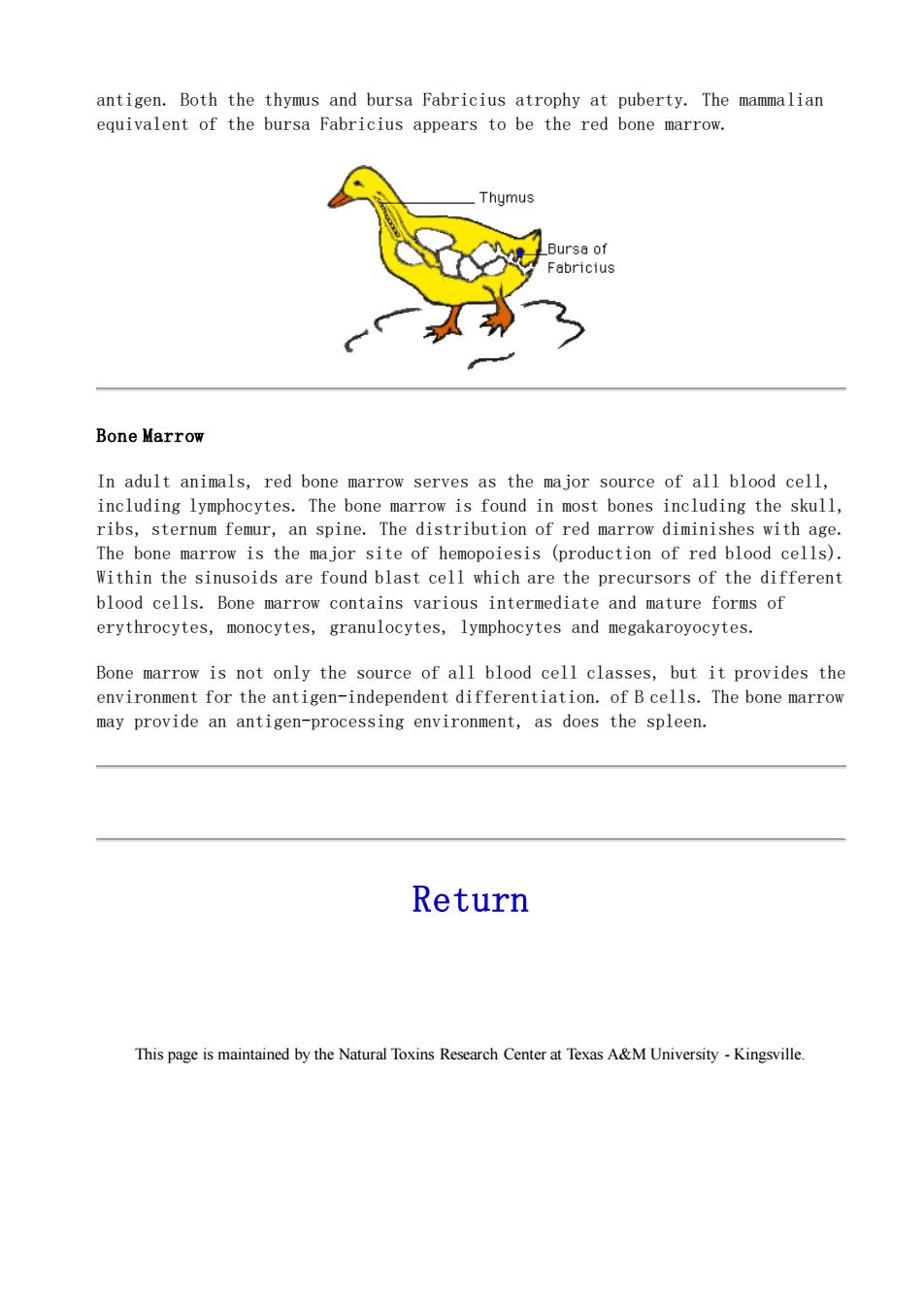正在加载图片...

antigen.Both the thymus and bursa Fabricius atrophy at puberty.The mammalian equivalent of the bursa Fabricius appears to be the red bone marrow. Thymus Bone Marrow In adult animals,red bone marrow serves as the major source of all blood cell, including lymphocytes.The bone marrow is found in most bones including the skull ribs,sternum femur,an spine.The distribution of red marrow diminishes with age The bone marrow is the major site of hemopoiesis (production of red blood cells). Within the sinusoids are found blast cell which are the precursors of the different blood cells.Bone marrow contains various intermediate and mature forms of erythrocytes,monocytes,granulocytes,lymphocytes and megakaroyocytes Bone marrow is not only the source of all blood cell classes,but it provides the environment for the antigen-independent differentiation.of B cells.The bone marrow may provide an antigen-processing environment,as does the spleen. Return This page is maintained by the Natural Toxins Research Center at Texas A&M University-Kingsville.antigen. Both the thymus and bursa Fabricius atrophy at puberty. The mammalian equivalent of the bursa Fabricius appears to be the red bone marrow. Bone Marrow In adult animals, red bone marrow serves as the major source of all blood cell, including lymphocytes. The bone marrow is found in most bones including the skull, ribs, sternum femur, an spine. The distribution of red marrow diminishes with age. The bone marrow is the major site of hemopoiesis (production of red blood cells). Within the sinusoids are found blast cell which are the precursors of the different blood cells. Bone marrow contains various intermediate and mature forms of erythrocytes, monocytes, granulocytes, lymphocytes and megakaroyocytes. Bone marrow is not only the source of all blood cell classes, but it provides the environment for the antigen-independent differentiation. of B cells. The bone marrow may provide an antigen-processing environment, as does the spleen. Return This page is maintained by the Natural Toxins Research Center at Texas A&M University - Kingsville